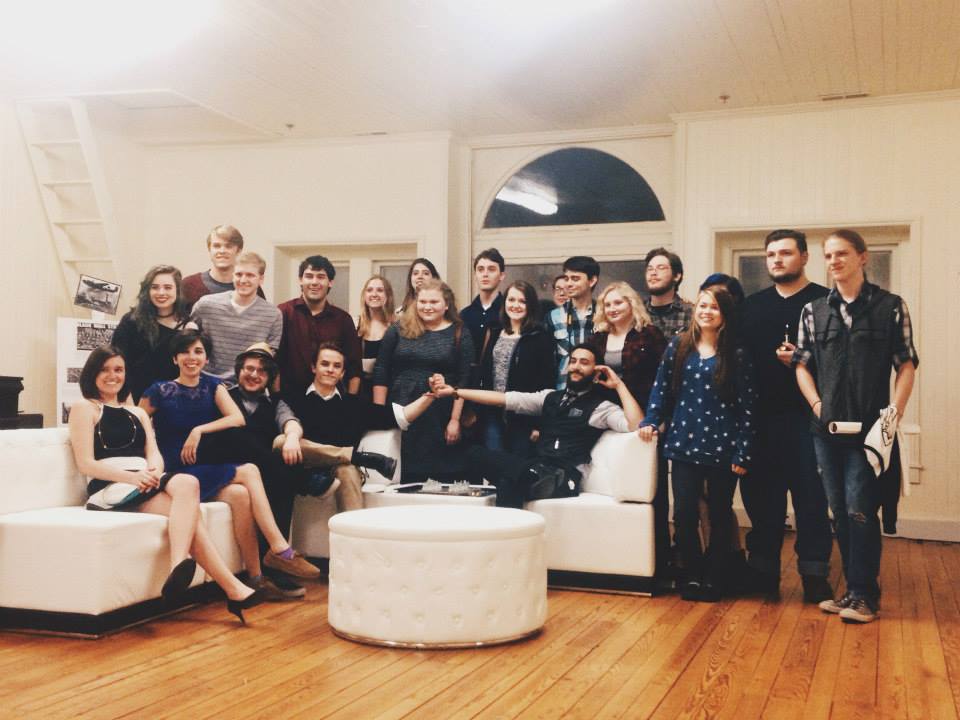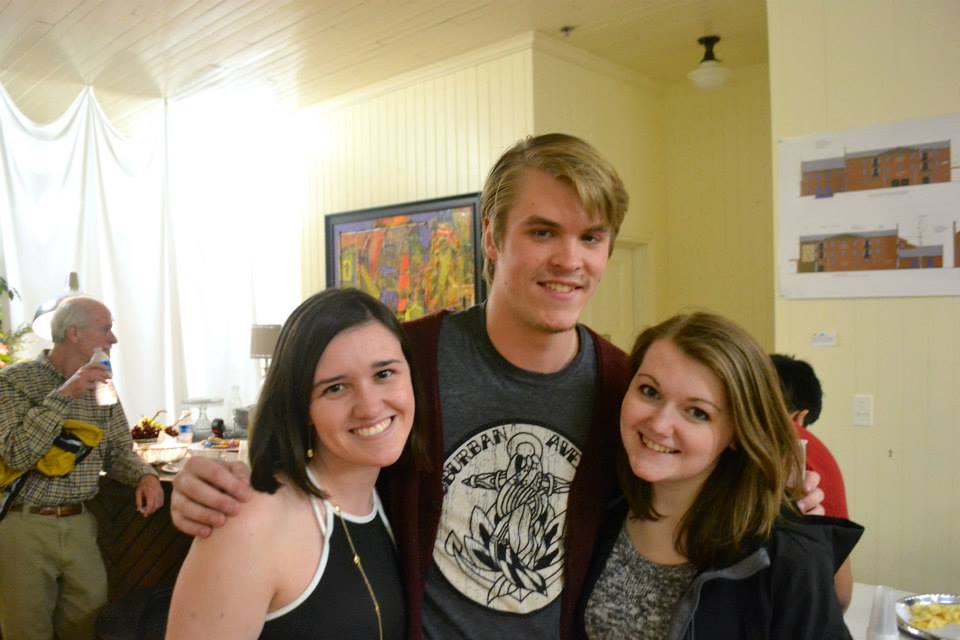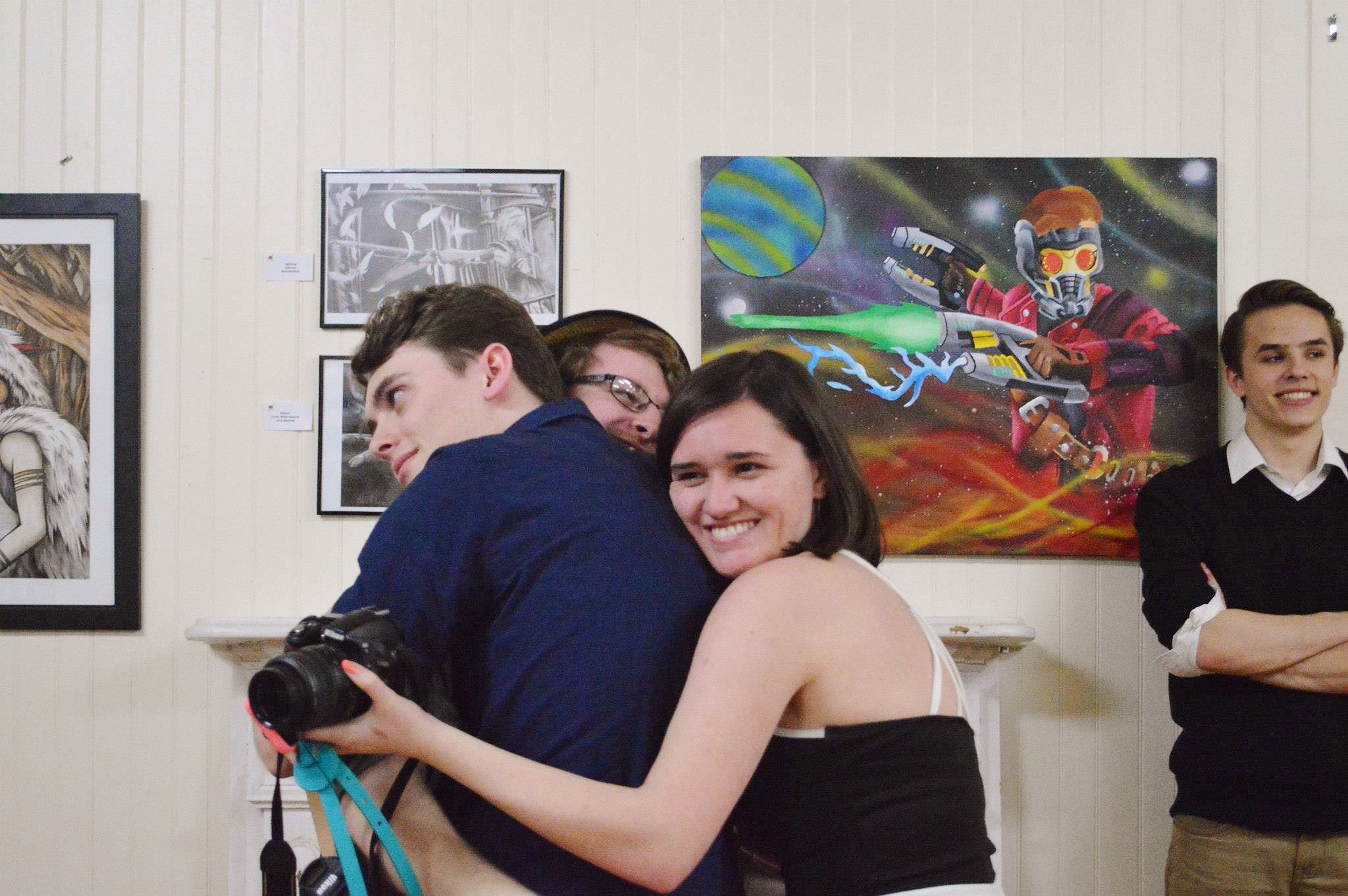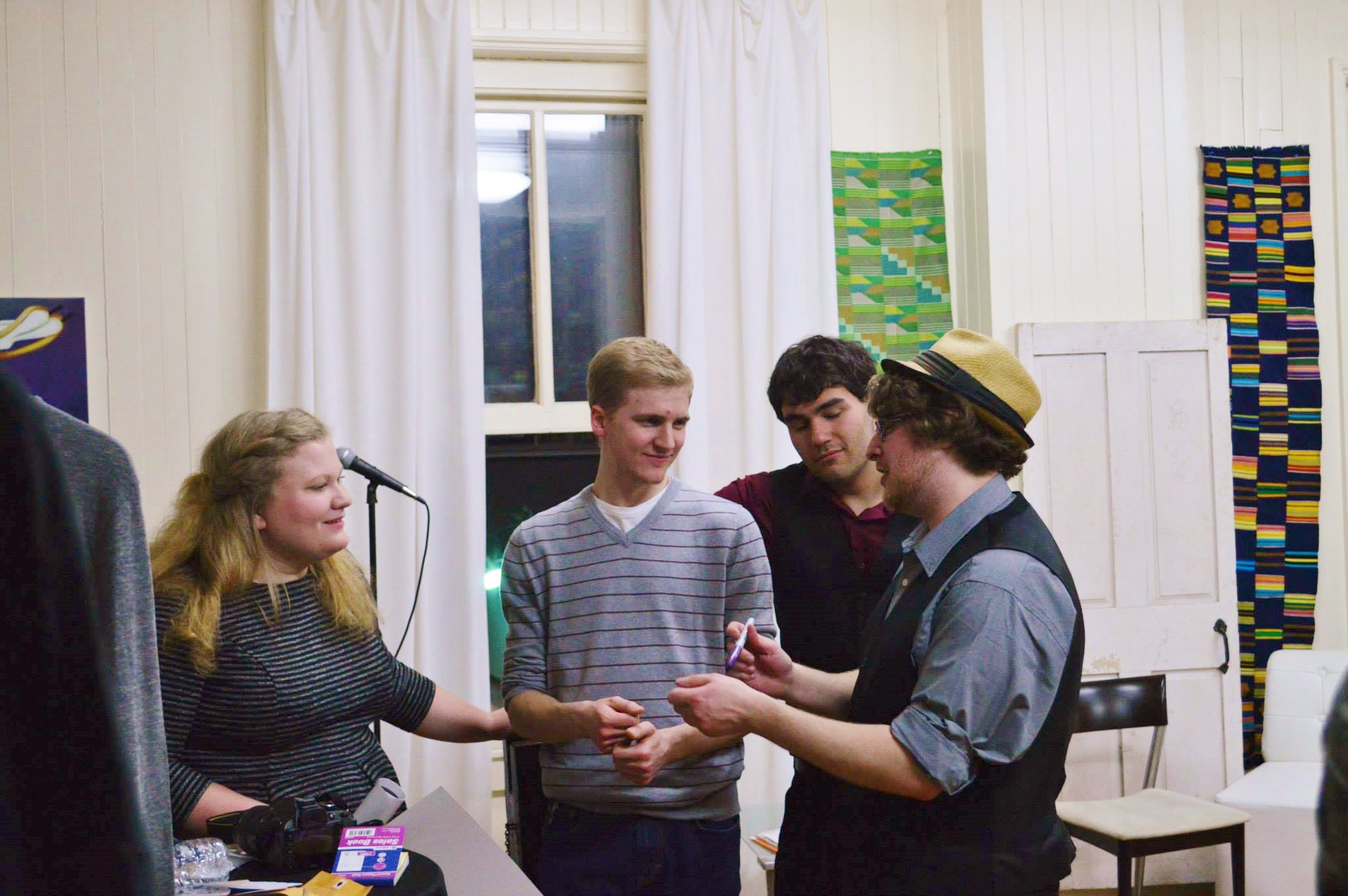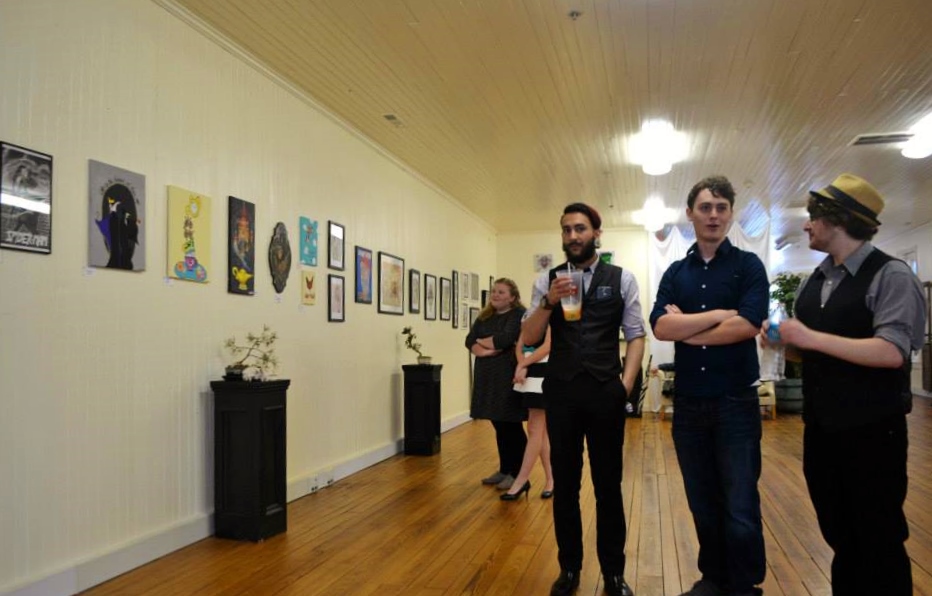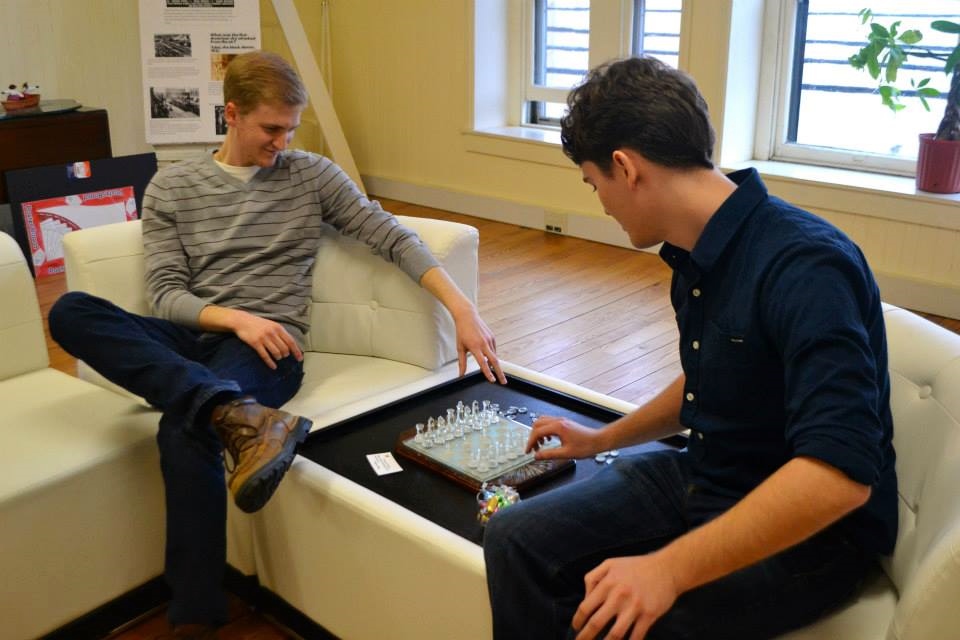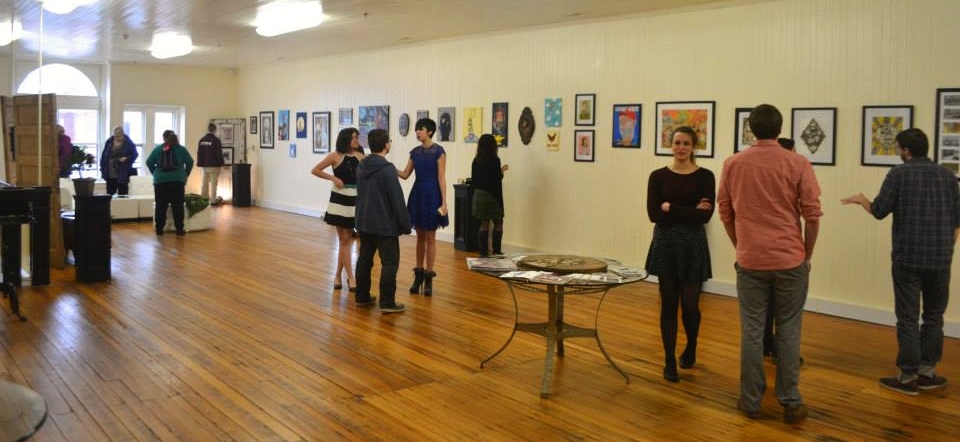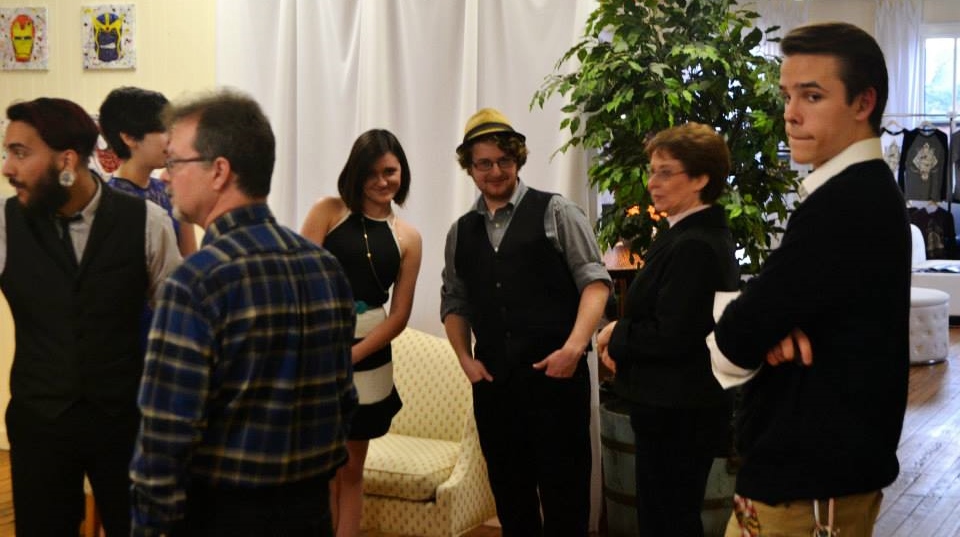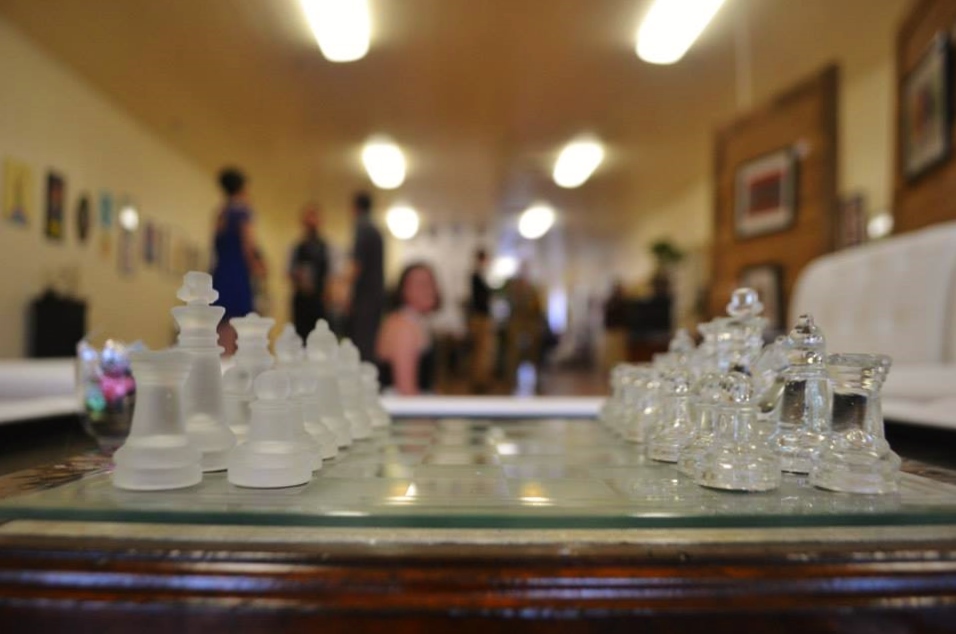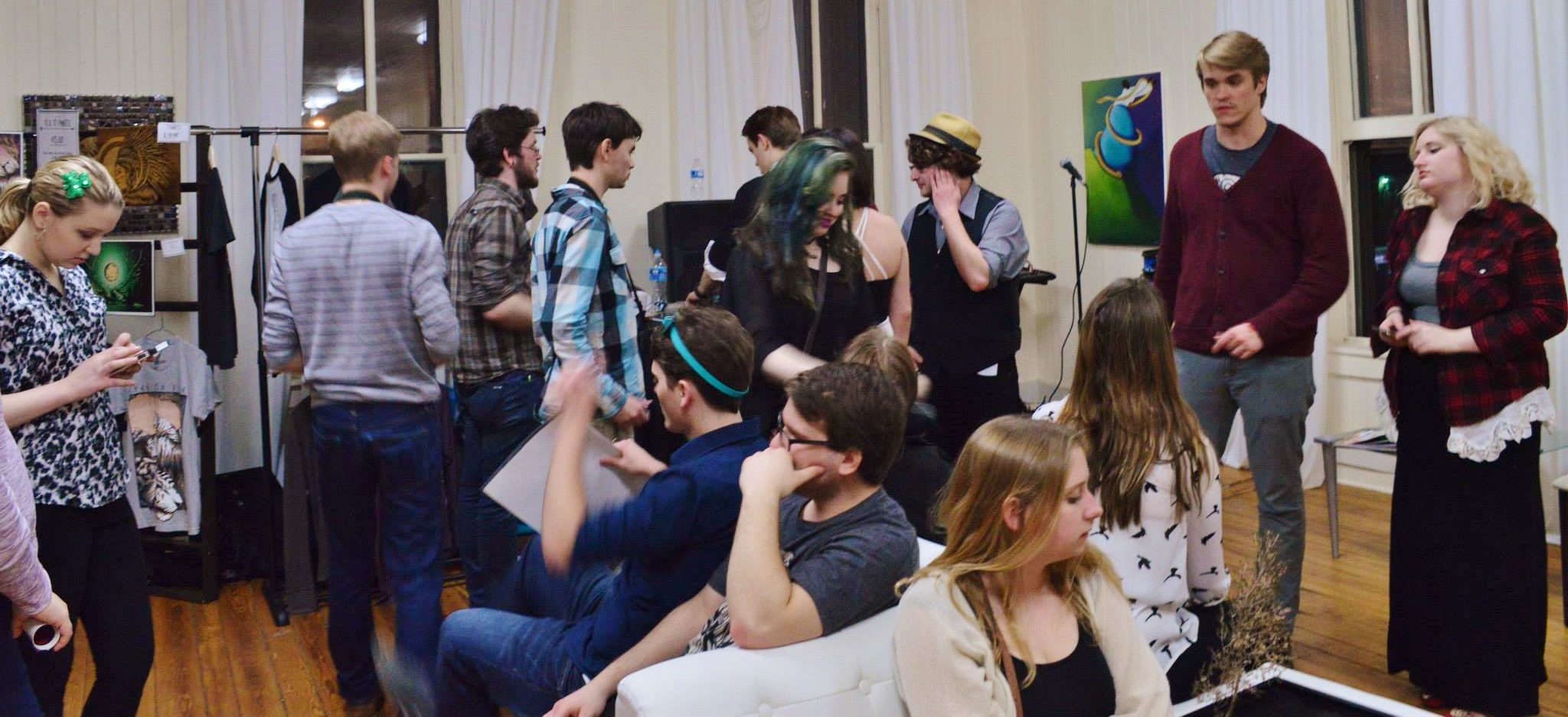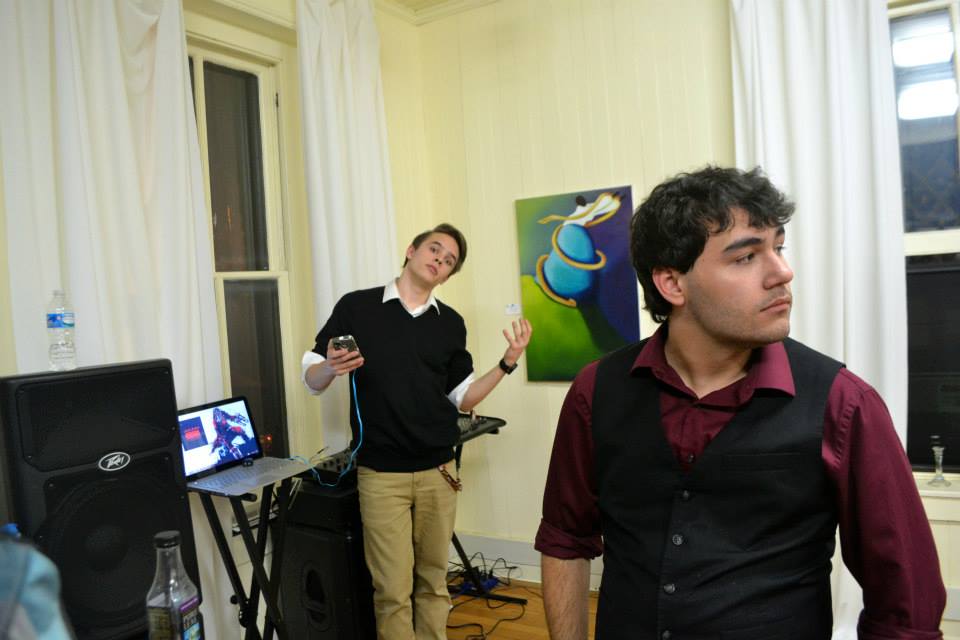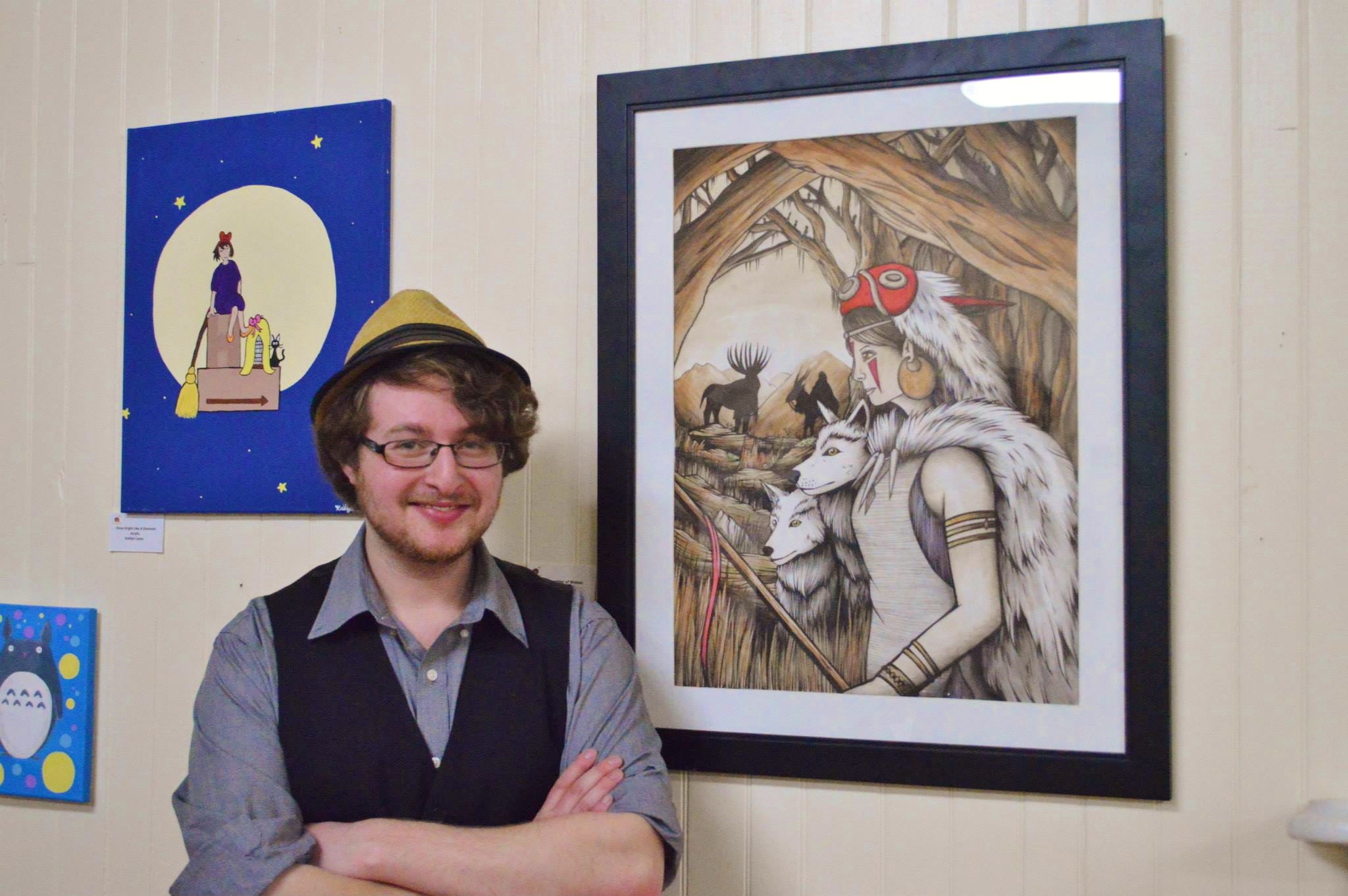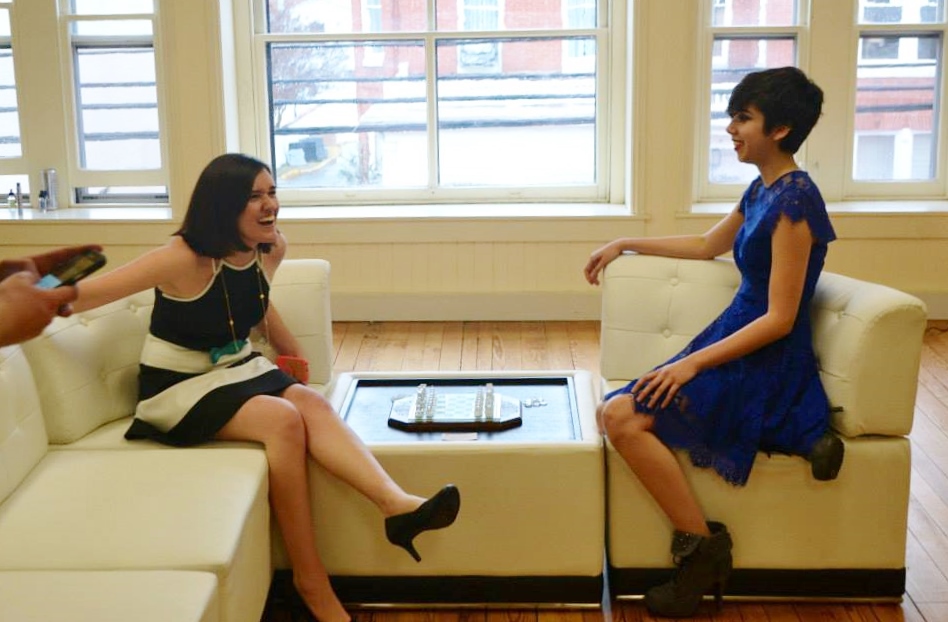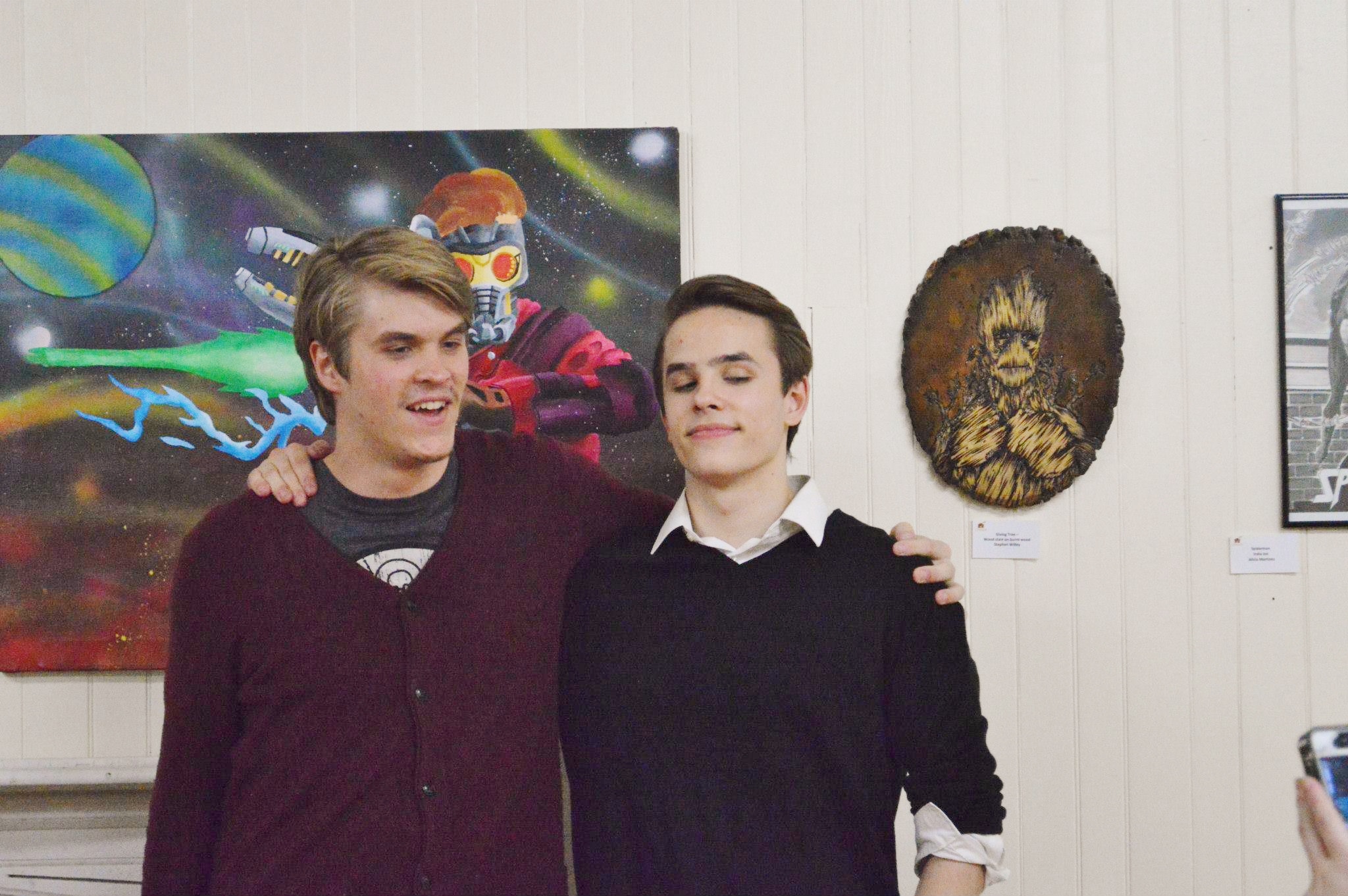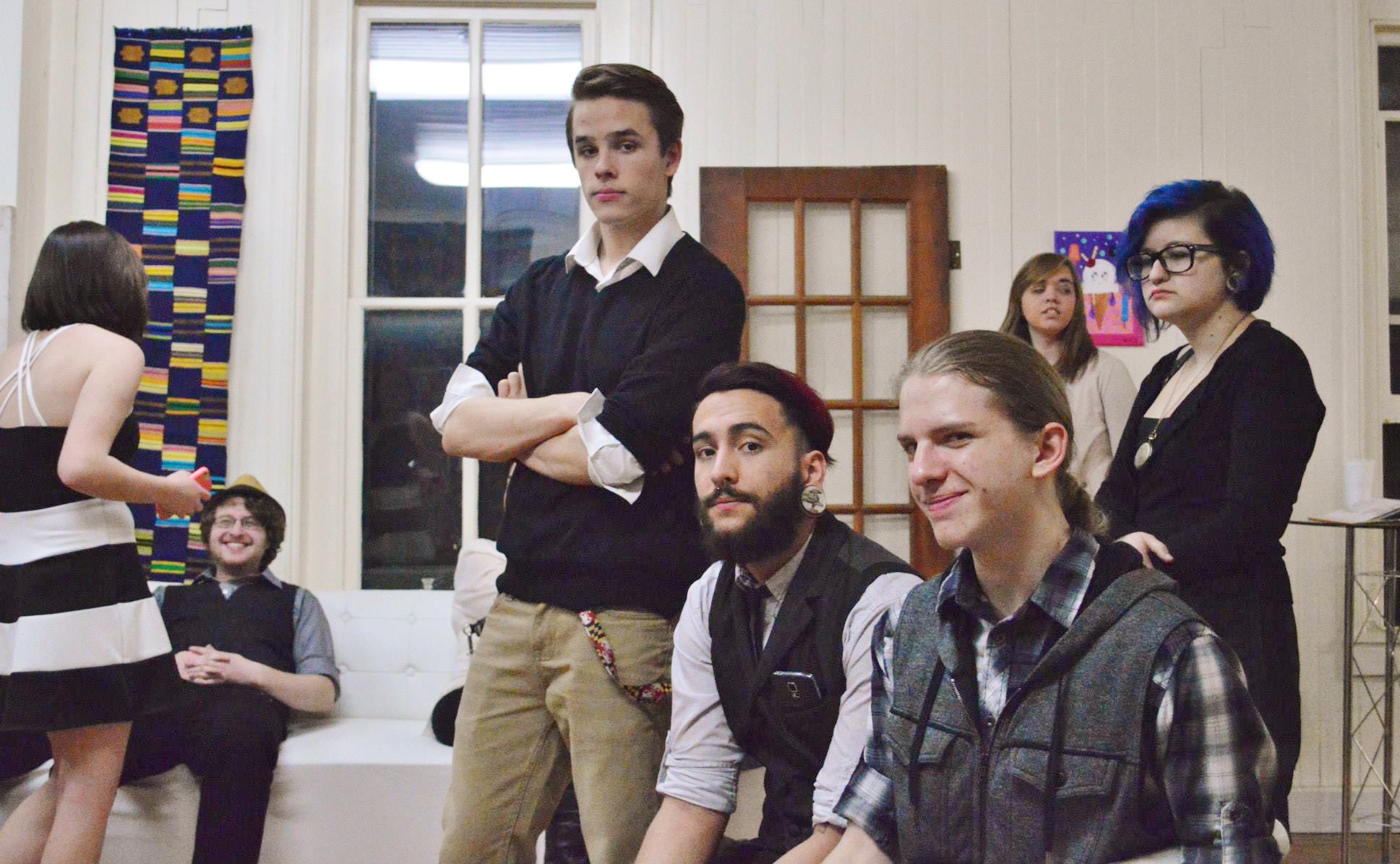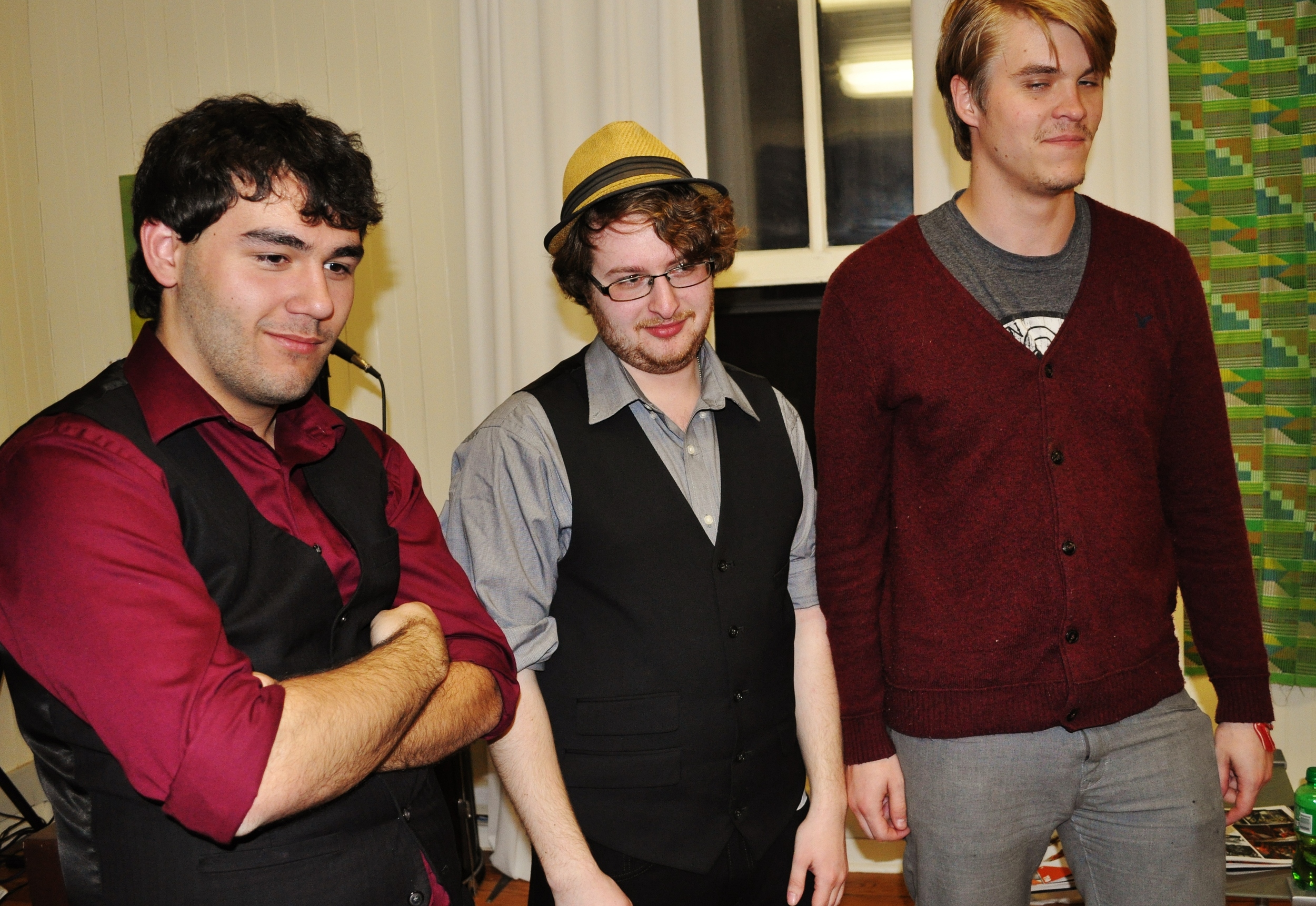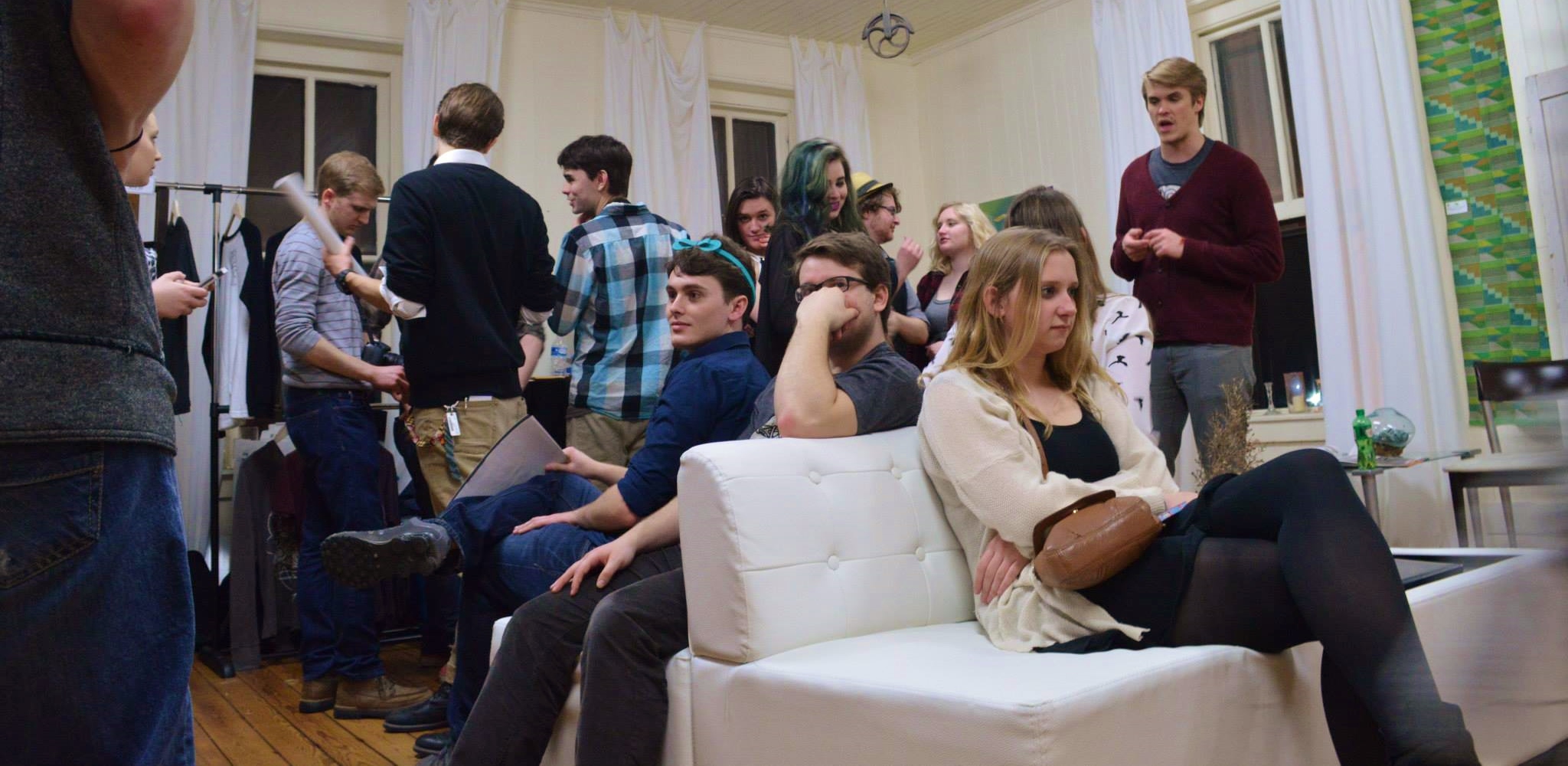The Amateur Artist's Guide to Having A Show
Opening Night for Modern Mythology at the Liv Again Gallery, Circa 9pm, 3 hours after opening.
Over the past 5 months or so, my entire life has been completely consumed by one overwhelming event: Modern Mythology. This show, which my friend's and I put together to showcase our love for all-things pop-culture, drained us and stressed us to a level that we had never EVER anticipated it would. Back in September, when we were approached by the owner's of the Liv Again Gallery in Cambridge Maryland, we had nothing but pie-in-the-sky hope's and vision's of where this monumental show would take us. We saw ourselves bringing light to a town who's narrow-minded artistic thinking had froze it in the realm of landscapes and boring bird paintings for all eternity. We had euphoric thought's of bringing out all the comic nerds, movie fan-boys/girls and lovers of every TV show that we loved as well. Of course, they were over-the-top estimations; and through the process of creating pieces for 3 months, and promoting for another month while all 5 of us juggled school, college, part-time jobs, full-time jobs, clothing line releases, personal commissions, and personal-life struggles, we realized that we were in way over our heads.
From left to right: Quinn Gethers (Bonsai Artist), Stephen Willey (Illustrator and Designer), Alicia Martinez (Illustrator and Fine Artist), Kaitlyn Casey (Fine Artist), and Luke Martin (Illustrator and Fine Artist)
In this semi-short article, I'm going to attempt to outline everything we did absolutely right and horribly wrong with this show, as well as give a reality check to anyone who's planning to do art as a career. I will say up front: Gallery show's are NOT money maker's. At least from what I've discovered in the 3 Gallery show's I've done. They are a labor of love, and more about showing your work and networking. And above all, I realized that especially with this show, it's more of a celebration of the artwork and how it came to be. All five of us felt the best through this entire process on opening night when all of our friends were there to enjoy the work with us. It was a huge party and it felt good to have everyone in one place to talk shop and catch up. So keeping that major revelation in mind, let's dive into some plot points for this show, shall we?
The Back Story and Costs
Modern Mythology was a Pop Culture Inspired show, aiming to pay homage to comics, movies, tv shows, and the like. In September of 2014, we were approached by the owners of the Liv Again Gallery in Cambridge, Maryland to do some sort of event with them. Since pop culture shows are all the rage at the moment, we decided to try and bring the phenomenon to the Delmarva Peninsula. Overall, there were about 40 pieces of artwork hanging on the walls of the gallery when we were through, as well as 10 or so Bonsai tree's that Quinn had grown and stylized to decorate and add atmosphere to the gallery. At least 80% of those pieces were brand new pieces, created between October 2014 and March 2015. Most of those pieces took anywhere between 20 to 75 hours to complete and frame. Speaking of frames, we were lucky enough to have the time of year on our side, and most of us bought our frames on Black Friday for half price. We still ended up spending about $400 on frames (an average of $150 per person between Luke, Alicia, and myself. Kaitlyn and Quinn didn't need to worry about frames.) We also spent a month promoting. We split a $60 cost 5 ways and ordered a massive set of 500 postcards, and put them EVERYWHERE. Bus stops. Coffee shops. Galleries. Gas station bathrooms. Book stores. Restaurants. People's back pockets. Anywhere we could stash them. We also spent tons of time researching our subject matter before working on the pieces. Most of us re-watched movies, re-read comics, and streamed tv-shows off Netflix for hours and hours while we brainstormed and worked. There's also the other add up costs of gas for driving back and forth to the gallery for meetings and other such things, as well as replacement frames cost (we'll get to that in a second.)
The show was planned to open one-night only, and then remain in the gallery for a few weeks for the owners to try and sell the originals. Though, much to our surprise, the owners of the gallery insisted we have a closing of the show as well. The closing wasn't nearly as large a crowd (much to our expectations) so we closed it out and now we're here.
Now that the whole origin-story is out of the way, let's move onto the pointers. I'm going to shoot off different subjects and jump all over the place; these are all things that became glaringly aware to us during this whole experience, as either something we did well or something that was a huge issue (mainly the latter.)
The back area of the gallery space.
Venue / Show Location
It seems rather stupid to say that the location where you choose to display your artwork is incredibly important, if not the most important thing. It's something that must be tailored towards your audience and the people you're trying to lure in. For instance, why would you host a comic convention in the deep wilds of Canada? Or why would you go fishing for sharks in a small lake behind your grandmother's house? Both seem impractical. Yet, we seemed to over look this a bit. Cambridge is not a very happening place; even the owner's of Liv Again knew that. Their goal has been to bring culture and the arts back to a town with not much in it. And in our blind excitement to do a show, we hopped on with them, not realizing that our prices and "products" may not appeal to that community. From what we could tell, most of the local tenants of Cambridge really enjoyed our different style and the subject manner, but of course the high price tags we had to put on our hours of work weren't on quite the same level of acceptance.
My Advice: Make sure your location fits the type of people who love your work. If you want to do pop-culture art, see about having an event at a local movie theater or comic book shop. If your stuff is more 3D, try galleries with audiences that tailor to that sort of thing, or maybe even a pottery shop, or a metal sculpture gallery. Always look around for anything that fits what you're making; and don't be afraid to ask a place if you can have a show there. If it's not a corporate establishment and it's owned by an actual human being, most of the time they may humor you a little, at least enough to get your foot in the door and sway them to your idea. Make sure that:
- It's relevant to what you're displaying
- It's easily accessible (to invitees as well as anyone who happens to be passing by)
- And if possible, make sure they have a fan base of their own.
If they don't have a fan-base of their own, then you better have one; because if there's no one to show up, what's the point eh?
Sub-note: I didn't feel like this entailed a whole section of it's own, but be very wary of the surroundings and environment that your artwork will be in. Make sure it compliments what it's around, and seems natural. Most people wouldn't expect to see classical war scenery paintings in a comic shop (unless they incorporate comic book characters somehow, which would be quite interesting..), so make sure your stuff belongs. Also, be wary of how you will hang your artwork. This became a HUGE issue for us. The gallery we showed at had no hanging system besides nails and a wall; and while I wanted to spare the amount of holes we were putting in their walls, my solution wasn't exactly the best . I went with heavy duty velcro. And while this has worked quite well for some people we know and myself as well, we weren't anticipating the temperature changes of this upstairs room. A few days after we hung the show, I received a call that 5 paintings had fallen off the wall in a period of an hour. Luckily, 3 were canvases and only one of the two glass frames shattered. We soon replaced it, but I had to take off of work and run down to Cambridge to rehang the entire show on nails in an attempt to prevent any more casualties. From what I can gather, the cold temperatures at night and then the sudden rise in heat in the morning caused the adhesive to act strange (correct me if I'm wrong in assuming this, I'm definitely not a scientist by any standards.) So bottom line, KNOW YOUR ENVIRONMENT. Otherwise you might sacrifice some of your paintings in the process.
Marketing / Promoting
This is something that I feel like we did quite well in; but it still wasn't entirely enough. Marketing and Promoting is how you plan on getting the word out about your show. Again, what's the point if no one comes? You're just stuck with an admittedly awesome room full of work that you toiled and slaved over, but if no one knows it's there, it's pointless. So, here's the avenues we took for promoting:
- Facebook: USE THE EVENT CREATOR. It's honestly one of the very few things about Facebook that still makes sense and works well. Create the page, invite everyone on your friends list; and you're done. If you're feeling quite daring, ask your friends to do the same with their friends. And so on and so forth. In this process, you have tons of people conglomerating into one page where they will recieve EVERY update you post. Whether it be date changes, pictures, videos, or anything. They're locked in. We used this to post process videos of all of our work leading up to the show, and it worked wonders. It got people excited and kept them intrigued.
- Instagram: Post process pictures or things to engage with people. Maybe with friends you just met and didn't know you did art, or with old friends who are curious about this gallery show you keep blabbing about. Or use the infamous and vile ~#hashtagssss~ to mark your posts with subjects so random people can stumble across them. Granted, it's rare that those hashtag finders will come to your show, but I can speak from personal experience that it works for engaging with your audience. People who found me through hashtags have bought shirts from me, so it's not exactly a huge joke when money is involved, hmm?
- Physical Promotion: As I said earlier, we used post cards for our main version of physical promotion. This was mostly Luke's idea. They were small (6 inches by 4 inches) and were easy to carry and store anywhere. You could fit them in your bag or folder, and they also doubled as a neat little piece of artwork as well since they had the flyer artwork on the front. As for other physical promotion, Liv Again gave us a few 11 x 17 posters (which we honestly didn't use much. They weren't printed the best..) to hang up in a few major areas.
- Your friends: if they're interested in what you do and are willing to help, let them! Have them pass out flyers or spread the word to anyone and everyone! We had friends put flyers in Towson around the university and coffee shops, and we had some friends put flyers all around Chesapeake College as well. We even had a friend do a presentation in one of her classes to help promote the show. Never overlook the value of an awesome friend!
- Youtube: this wasn't a huge one, but we did a time-lapse video of us putting the show together which was an interesting little promotional tool. Some people liked it but it wasn't as nearly successful as the other stuff. If we had more time, we could have put together a proper short film/teaser for the show, and that might have helped a bit.
There's probably tons more we could have done, but these were what worked for us. It got most of our friends out, as well as friends-of-friends and past supporters of our art. Of the 120 or so people that showed up or visited on opening night, about 85% of them were fans of our work, friends, or people that heard about us through our promoting.
Money / Contracts
Now, if you read what I said above and you're not entirely in this to make money, this part doesn't really apply to you. I would advise you to keep reading though.
In our show, we all had original pieces for sale that were on the higher end of the price spectrum, ranging anywhere from $70 to $800. Some people might find that to be way too under-priced, others may find that to be way over-priced. It's a matter of perspective and your market. Honestly, our market found our prices to be somewhat respectable, but no one wanted to touch it. Now when I say market, I mainly mean the people who browse the gallery and not really fans or friends of ours. The latter thought the prices quite fair, and I had a few offers for the pieces but in the end they went with prints and shirts instead. Which comes to our other source of money: prints and shirts.
Luke, Alicia, and myself have all been working together for about 9 months now, and we've done a few arts and crafts based events, where we have sold a lot of prints and shirts. This is really the avenue to go if you want to make money with what you create. We put down a large sum of money for a lot of prints and shirts, go out to events, and sell them for a $5 or so profit per piece. That's not a lot, but it's what we're at currently. We're working our way up.
Anyways, this brings us around to another big plot point in this story: CONTRACTS. Let me state right now up front, we were idiots when it came to this; I will say that up front and honestly. Contracts are something that we ran into for the first time with this show. Alicia and I have done two shows previous to this; both were small time. One we did at a local gallery in Denton, MD and the other at a high-end restaurant in Denton as well. Neither required contracts. When we met with the people at Liv Again, to my knowledge, no mention of the word "contract" really panned into conversation til two or so months before the show. At that time, we figured it was just a contract stating "I will display my work for the alotted amount of time and blah blah blah here take your portion of the money." and then we signed it and skipped off into stardom. Also, back in October when we met with the owners, we discussed that the portion cut of the originals ONLY would be 60% us / 40% them. Alicia, Luke, and myself still thought this a bit steep, but they weren't willing to budge, so we let it go. Flash forward to the night of the show, a half hour before opening, they give us the contracts which state a 55% / 45% split, which is nearly half and half. Call me crazy, but I dont think that sounded quite worth it. After some discussion, we cleared it up that we could get 60/40, and that they had recently changed their contract to the 55/45 to help bring in some more money to the gallery. They also had written on my contract that they would take that percentage from my shirt sales as well. On most of my shirts, it costs me about $13 for a one color shirt. I resell them for $20 to make a few extra bucks and to compensate myself for the 25 hours spent creating the design for the shirt. If they took that percentage from my retail price, I would be losing so much money, it'd be stupid. We had also agreed at the beginning that the shirts were my own to sell and that they would get no percentage of it, to which the conceded and agreed to as well.
Now, 55/45 is steep, but that's their gallery and however they want to run it, that's fine. But from this experience, I've learned to ALWAYS get the contract as soon as possible, and make sure it is signed and to your liking. I personally believe that no venue who is simply loaning you a room to hang your work in deserves a nearly 50% cut of what you make. That's complete robbery, especially when you spend hours and hours on your work and could probably have better luck selling it somewhere online like Etsy.com or Ebay.com for like a 25 cent listing fee or for free. Make sure you get the contract so you're not left in a disagreement hours before your show. It will spare you pain in the long run.
Let it also be said as a side note, that I am not against venues or galleries making money from events. Just so long as it's not hurting the artist. The galleries could possibly charge a small admission, which isn't entirely desireable, but it is an option. They could also hold promotional auctions or other things, such as a door prize raffle that offers an original piece from the artist. Perhaps have the artist donate an older original, and then every time someone donates a dollar, they get a chance to win the piece. Raffles can add up money quite quickly. Or if they'd like to make money off of the artists prints or shirts, have the gallery go half on the production cost of the prints or shirts, that way they would be entitled to that near half percent of what they'd get from the shirt. Just anything to make it so they're not stealing money from the artist.
Subject Matter
Now, let's talk about something a bit lighter: Subject matter! As I've said many a times in this article, make sure that whatever your show is about is tailored towards the audience you want, and it works vice versa. Maybe you want to do a show exploring human emotions? Maybe you want to do a show based off ancient Greek mythology? Do whatever! Just make sure everything fits together and compliments each other. For instance, don't do a mono-chromatic colors-only show and then show up with a rainbow colored canvas that looked like you barfed crayons all over it. The show must be curated, whether it's only your art or if it includes other people's art as well. Make sure it all makes sense and flows together.
That being said, this will make me sound like a hypocrite, but stay away from intellectual property (i.e. pop culture art.) "BUT STEVE YOU DID A WHOLE POP CULTURE INSPIRED ART SHOW." Yes, imaginary reader who speaks in all caps, I did. And it wasn't the best decision. Luke, Alicia, and myself decided on this theme back in October, when we had only seen Pop Culture art's popularity and didn't know the technicalities and legalities. There's a really fine line between pop culture inspired art and bootlegged artwork. Though based on our venue and the massive lack of sold pieces we had, I don't think it was really a big deal. Though moving forward, pop-culture artwork will be very-much absent from our artwork-for-sale. Also, the pop-culture market bubble is near bursting. A lot of people are looking for more and more original content, so now is a prime time to start cranking out those original illustrations and ideas!
Personal Life
Now this topic may be a largely grey area, but your personal life can really incorporate into the work you're making. Shocker, right? I mean, if you're super busy and can't make time for the show you want, it's kind of pointless to have one, right? With our group, we found that the main problem was school and jobs. Kaitlyn had finals for college when we first started prepping for the show, and then she was engulfed in a barrage of new college courses when the new semester started, as well as two jobs. Alicia had a ton of college work as well, combined with working nearly 7 days a week at the time. Luke had a ton of high school projects he was working on, but out of all of us, he faired the best. He created a large majority of the work for the show, intelligently using his class work time to work on pieces for the show as well. Quinn's trees took a long time to stylize and grow as well; and as we all know, you can't rush nature. As for myself personally, I work a full time job 5 days a week. During the winter months, I would bring things to work on during my lunch break in an attempt to make any use of my time I could.
Mostly speaking from my point of view, this show was incredibly taxing for all of us. I know that Alicia and Luke were pulling their hair out to come up with painting ideas and compositions, and I was losing it trying to come up with something that I was content with. As I said in a previous post on here, I even had to redo an entire piece from scratch because my stupid ego couldn't deal with the first version. When you're working on a project this big, you need to know the people you're working with and most importantly, yourself. You need to factor in any mental ticks that could cause you to fail or mess up. To the best of your extent, you need to make yourself as less of an opposition as possible.
This can be the most challenging part of the process, mainly because you can never really determine how you're going to feel at any given time; but I'll try to explain what I mean by using myself as an example. Personally, I know that the winter months are a bit more taxing on my emotions. It's gloomy. It's cold. And generally everyone else is gloomy and cold too, so that doesn't really help. This can bring me down, and when I'm really down and uninspired, I don't make work that's pleasing to myself. So usually, I'll do one of two things:
- Self Evaluation: I'll reflect and figure out what the heck I can do to fix my emotions. Will a movie or show help cheer me up? Will chatting with some friends who understand what I'm going through help? Do I need to work on something new that will help boost my self-confidence and enable me the energy to finish the first thing? Do I need to just eat food and get a good night's sleep?
- Or Wallow In Pity and Doubt: This doesn't really happen nearly as often as option one, but I do tend to isolate myself sometimes. And sometimes it's a good thing. Yeah, it seems hard on myself, but it causes me to harshly look at the perspective: I'm fine. I can do this. It's not the end of the world, so either you can get off the floor and stop whining and show everyone what you're made of, or you can just quit. And quitting isn't a possible option for me.
During this show I made it a huge habit of hanging out with friends at least twice a week to take the edge off, and just get my thoughts out of my head. It's great to push yourself to always crank out new stuff, but being stuck in a depressing room every night for weeks on end doesn't help you in the long run.
This subject could be delved into much deeper, and I might save that for another time; but basically, try and figure out who you are and what you're capable of, and always keep that in the back of your mind so you know how to schedule yourself.
Our best friends and the back bones of our artwork.
Finding Help Wherever You Can
So after all this technical nonsense about the logistics of a gallery show, I'd like to make my last and most important point: make some damn friends. This show could not have been possible without all the people who have supported us and helped us through everything. All the people pictured above have bought things from us, brag to their peers and colleagues about us, and come out to all our events to high five us and chat about what we make. And in turn, you should always be willing to learn from whatever they're making. A lot of our friends are in theatre, whether it be high school or college theatre or community theatre, they have some incredible acting skills on them. Some are skilled photographers, who even help me with video recording and photographing some of my new products. Some are musicians, who I look forward to collaborating with in some form or another. Some are cops, some are podcasters, some are comedians, some are technological wizards, and some are undecided, but have passion and cunning in them and I guarantee they'll be something great. And some are even aspiring artists like us, and I look forward to seeing them get to a point where we can pull them in with us on this stupid, wild ride. These people help us put shows up and take shows down. They help us pack everything up and unpack our nerves afterwards and help us wind down and keep a stable mind. These people are the heart of our creations, and without them, it wouldn't be possible. So always keep a good group of people around you. Let your work reflect your admiration of them, and always help them out in whatever they do, because you never know when you'll need the help as well.
Closing Thoughts
So if you made it through that massive overview of all the stuff that happened to us and our tips to fix it, I hope it helped you out and made you more knowledgeable. I don't want to discourage anyone from doing an art show or event; far from it. I want people to know what they're getting into; and yeah it's really damn hard, but we made it through it, and I really think you could too. If you need help with anything, talk to any of us for any tips or ideas to help push yourself to the next level. Being an artist isn't about being an artsy, lone, independent wolf. It's about joining together and raising each other up; and if that means I have to spend 5 hours writing a lengthy article about our failures, then so be it. So long as other's learn and can spread the knowledge as they go.
And I'd like to say a huge thank you to all those who helped us. Though this show was a pain in our back-sides, it showed us what we were capable of, and taught us so much and helped us meet so many new people. Thank you to the Liv Again gallery owners, Adrian and Jermaine. Thanks to all our friends who helped promote. And thanks to anyone who reads this and spreads the knowledge to others. Keep making the world interesting.
-Stephen Willey







